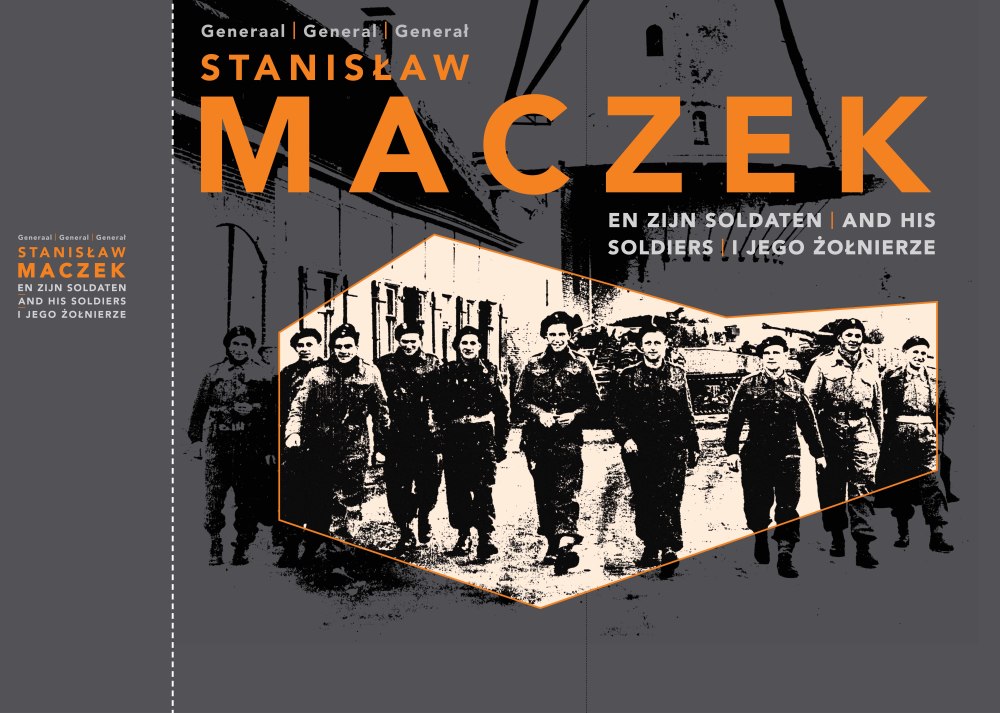The fate of Stanisław Maczek and his soldiers was a bitter one. The only places where for decades, memory strongly survived about Maczek and his men, were Belgium and the Netherlands. Why? Read our review with Dr. Łukasz Wolak!
polishhistory: Stanisław Maczek seems to be one of the most famous and most highly respected Poles in the Netherlands today. Why?
Łukasz Wolak: Many factors have had an influence on shaping the ethos surrounding General Maczek. He first rose to fame as a commander within Poland in September 1939, when he was recognised as the commander of the 10th Cavalry Brigade, which was famous for never losing a single battle. He confirmed his great skill when commandeering the 1st Armoured Division in Western Europe between 1944-1945. Not only were many Dutch cities freed at this time by soldiers from Maczek’s Division, but they also managed to escape from damage. General Maczek consistently strived to avoid bombing Dutch towns with artillery fire, instead mainly attacking the Germans in the foregrounds of urban centres. As a result, he was also able to minimise civilian losses. It is no wonder then, that the Dutch respected this choice of warfare. In many Dutch towns where the Poles entered, they were greeted by the local population as the first representatives of the Allied forces. The memory of General Maczek and the division he commanded has survived in the Netherlands and is still present in the public space to this day.
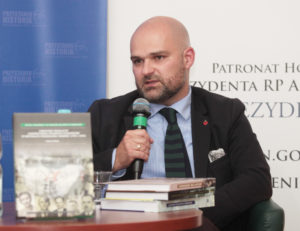
What traces of Maczek and his soldiers can we find on their wartime trail?
We can find them across the entire stretch of the battlefront route, from France, to North-Western Germany. Many of these places are now war cemeteries: the most famous Polish military necropolis in France is the war cemetery of the 1st Armoured Division in the town of Grainville-Langannerie, located between Caen and Falaise – the necropolis makes a huge impression. On the other hand, in the town of Mont Omel, in memory of the Battle of Hill 262 (the Poles tended to call it ‘The Battle for the Club’), in which German forces were successfully surrounded between Falaise and Chambois, a monument was erected, dedicated to the Polish soldiers. These are only a few of several examples from France, but we can find similar examples in Belgium, the Netherlands and Germany. The most recognisable Polish war cemetery in the Netherlands is the one in Breda, where Maczek himself was buried after his death, alongside his soldiers. It is a key place of remembrance about the 1st Armoured Division.
What were relations like between the Polish soldiers and the civilian population?
The Division’s leadership did not shy away from contact with the local population. In many cases, the soldiers shared with the population in its wartime struggles, for example they supported it with military food rations, since retreating Germans took all the food stocks with them as they left. Soldiers of the Division therefore turned out to be, not just liberators, but also guardians of the civilians. After the end of the war, many of Maczek’s soldiers returned to the towns which they had liberated in Belgium and the Netherlands and made the decision to settle there, often assimilating completely into the local population.
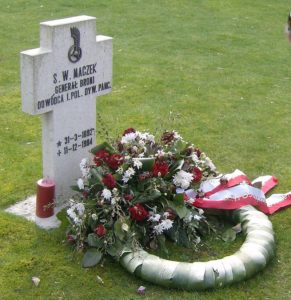
Memory about Maczek and his soldiers was successively undermined and blurred in Poland during Communist times. Why was this Polish General so strongly disliked by the Polish communist authorities ruling in Warsaw?
Maczek was symbolic of the fight for Poland and a legendary commander. The Communists feared his legend, which is why for many years they tried to undermine, not only his achievements and talents as a commander, but also simply kept silent about the whole history of the Armoured Division. It was no different with General Anders and numerous other talented commanders of the Polish Armed Forces, who were symbols of the fight for the freedom of Poland. Already on the 26th September 1946, the Provisional Government of National Unity issued a resolution which stripped 75 officers of the Polish Armed Forces of their Polish citizenship. In this group, alongside Maczek, could be found, amongst others Antoni Chruściel, Stanisław Kopański, or another ‘arch-enemy’of the communists – General Władysław Anders. After the end of the Second World War, all of them were strongly connected with the Polish Independence movement in exile. The decision of the government in Warsaw was an attempt to exact pressure on privates, to prevent them from entering into the Polish Resettlement Corps, which was considered by the communists to be a paramilitary addition to the British Army. Entering into their ranks was formally treated as service in a foreign army and against Polish law. Ultimately, these attempts by the communists did not bring the expected results, and soldiers of the Armoured Division still joined the ranks of the Resettlement Corps. It was only in 1989, that the communists repealed the decision stripping General Maczek of his citizenship.
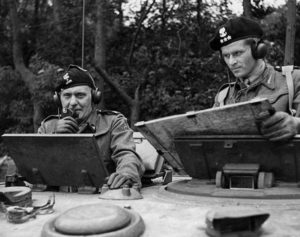
One of the most interesting, and little-known episodes from the life of General Maczek, is his participation in the post-war occupation of Germany.
After the signing of the capitulation agreement by the governors of the town of Wilhelmshaven at the beginning of May 1945, the Polish soldiers extended their duty of care to Poles being liberated from concentration camps and labour camps. Not long afterwards, alongside their duties connected with security, provision and identification of Polish displaced persons, those forced to resettle to territories of the Third Reich during the war, Maczek’s soldiers were also directed to help with the occupation. The town of Meppen became the informal capital of the ‘Polish enclave’, it was where the leadership of the Division was based, and it became the centre of Polish social and political life for the entire British occupied zone. This state of affairs lasted, without change, until the moment of Maczek and his soldiers’ demobilization in June 1947.
Can we therefore say that the solidiers of Polish Armoured Division received a kind of ‘Polish occupied zone’ of their own?
The ‘Polish occupied zone’ was supposed to be a much wider project, supervised by General Władysław Anders. The idea was to create a zone in which it was hoped to accumulate all of the Polish displaced persons from the whole British occupied zone. The units of the Armoured Division were to provide them with social care and security, and in the event of a future war, transform the zone into a facility for wartime activities. The plans also included the transfer of Polish divisions stationed in Scotland, amongst these the 4th Division of the Infantry and 16th Independent Armoured Brigade to the same territory where the 1st Armoured were stationed in occupied Germany. Unexpectedly, it turned out that the British leadership, under pressure from Moscow, withdrew the plan for the realisation of a Polish occupied zone and so, the vision that General Anders had imagined, never materialised.
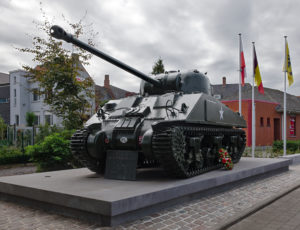
But this doesn’t change the fact that the area occupied by General Maczek’s units, had an important role.
There were 40 thousand Polish displaced persons in the terriories of the Polish occupied zone. Widespread overpopulation in the camps set up for them, was a pressing problem, and additional people were constantly arriving from other territories of occupied Germany to the places were the units of the Armoured Division were stationed. As a result of the very difficult situation, an idea was put forward, to displace local German populations in selected towns and resettle them with Poles. In the first instance, they were resettled in the village of Tunxdorf and Bokel, and later in the town of Haren. In total, around 1000 German families left Haren and were relocated to around 30 nearby villages and municipalities. Initially, Polish inhabitants re-named Haren ‘Lwów’, but due to pressures from Moscow and the British administration, the proposed name did not last for long. On the 23rd of June 1945, the town was ceremonially given the name Maczków, obviously after General Maczek himself.
It must have been the most Polish town in the whole of occupied Germany?
Yes, and in addition, it quickly started to teem with life, becoming a model for remaining Polish communities to imitate. There was a town hall which was responsible for collective distribution of food, accommodation and social care. Due to the creation and organisation of a large Polish community, Polish street names were introduced: Lwowska (now Werftstraße), Wileńska (now Schleusenstraße), Łyczakowska (Uferstrasße), Legionów (Emsstraße), Jagiellońska (Mühlendamm) and Zygmuntowska (Emmelnerstrasße). This was intended to help build a substitute Polishness, which the population of Maczków considered natural.
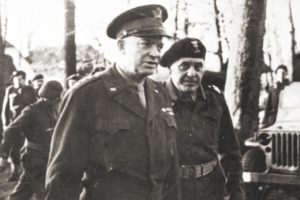
One of the more important signs of how active the Polish displaced community was, including the inhabitants of Maczków, was in the sphere of cultural activity. In Maczków, a Folk Theatre under the name of Wojciech Bogusławski was set up and performed. It was directed by Leon Schiller. Already in the first weeks, Maczków was visited by violinist Yehudi Menuhin, as well as the conductor Benjamin Britten, who gave a concert dedicated to the victims of war. By no means less important, was the significance of Polish schooling. In August 1945, a middle school (Gymnasium) and high school (Lyceum) were founded in Maczków, whose first director became Tadeusz Nowakowski (1917-1996), a publicist, writer, activist and a later an employee of Radio Free Europe in Munich. High School exams were passed by close to 100 people, amongst them the preeminent artist Józef Szajna.
Overall, Maczków was the starting point for many initiatives and the town was itself a project, with its main aim being to show the British administration the talents and maturity of the Polish dispersed persons in being able to independently govern their own city centre. In hindsight, it should be added that this plan was completely successful, but, above all, thanks to the patronage of Maczek’s Division.
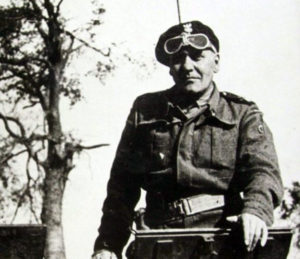
The fate of Maczek and his soldiers after completing their duties in occupied Germany, was a bitter one.
Fate really did deal Maczek and his soldiers a cruel blow. Aftr the end of the war and his demobilisation, the communists not only stripped him of his Polish citizenship, but also his livelihood. He was forced to work in a restaurant as a barman, which was below his qualifications, but also didn’t accord with his military merits and General’s temperament. He came to share the fate of many Poles in exile, who decided not to return to Poland. His soldiers dispersed around the world and when the British government, fearing a worsening of relations with Moscow, distanced themselves from General Maczek and the role he played in World War II, the responsibility to commemorate his glorious history, came to rest on their shoulders. Over the course of the many years of the war, a unique bond formed between Maczek and his soldiers. If it is possible for a commander to be like a father who looks after his children with great care, in the case of General Maczek, this was certainly true. The only places where for decades, memory strongly survived about Maczek and his men, were Belgium and the Netherlands. It would perhaps be difficult to find better evidence of the durability of these memories and Maczek’s legacy today, than the newly emerging Memorial Museum dedicated to Maczek in Breda.
Interviewer: Michał Przeperski
Translation: Blanka Konopka

